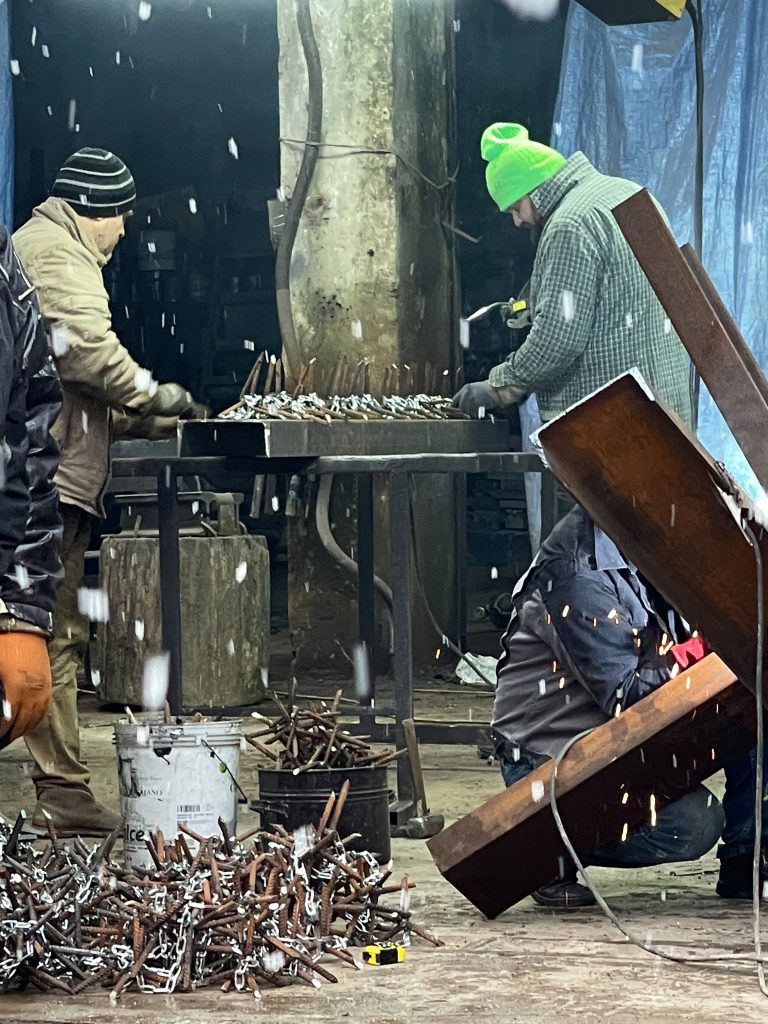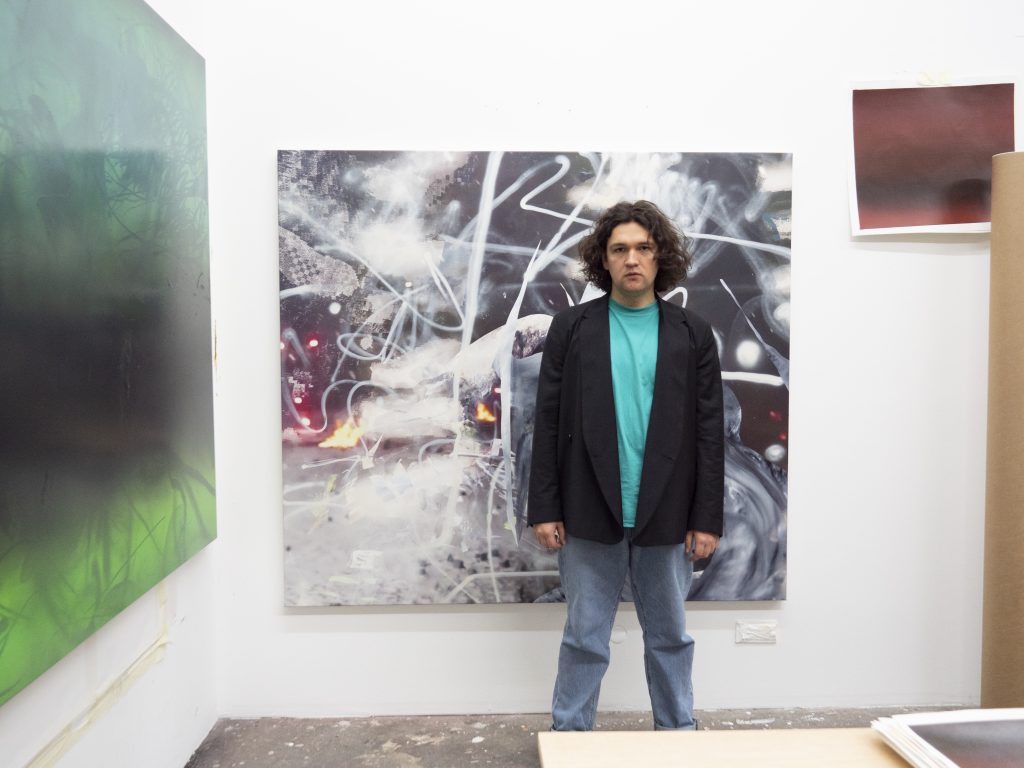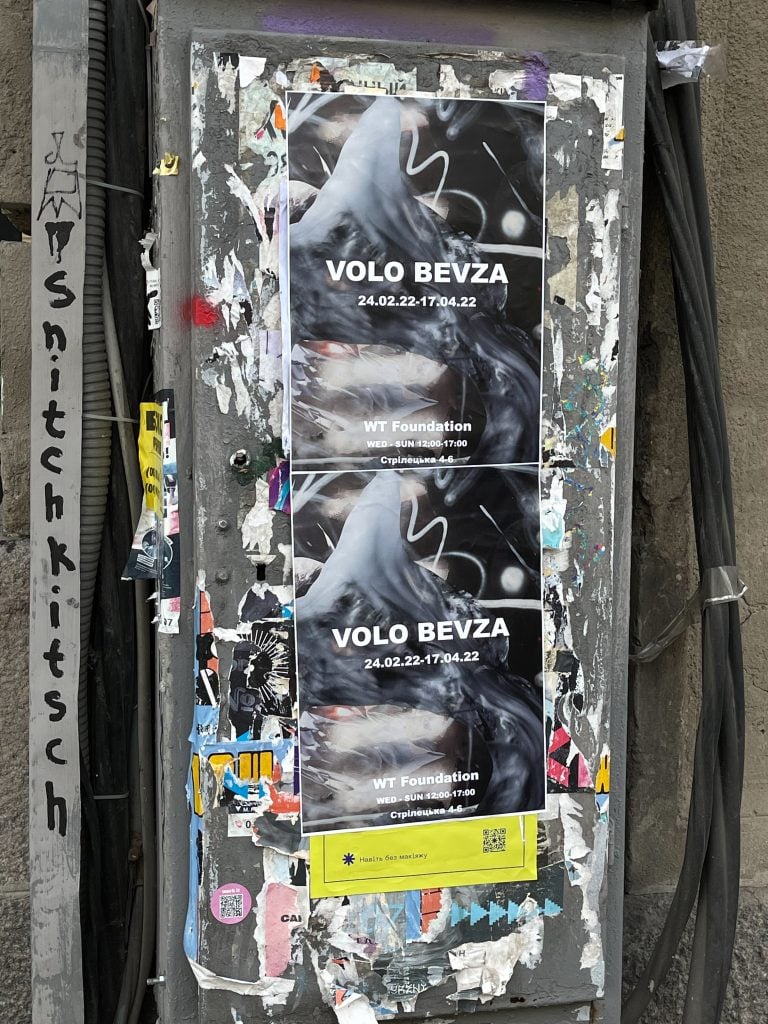Politics
Two Artists Traveled to Kyiv Last Month for an Opening. They Ended Up Staying to Build Metal Tank Traps for Ukrainian Forces
Ukrainian painter Volo Bevza and photographer Victoria Pidust found themselves stranded in a war zone.

Ukrainian painter Volo Bevza and photographer Victoria Pidust found themselves stranded in a war zone.

Katya Kazakina

When the Ukrainian painter Volo Bevza left his apartment in Berlin to attend the opening of his solo exhibition in Kyiv last month, he never imagined that he would end up in the middle of a war zone, using his artistic skills not to create sculptures, but to construct anti-tank metal structures known as “hedgehogs.”
Bevza traveled to Kyiv to inaugurate his show at the WT Foundation, a museum set up by American collector Walter Tamke. It was scheduled to open on February 24; it never did.
The morning of the opening, Russia invaded its neighbor, and bombs began falling on major Ukrainian cities. The shock and severity of the invasion were still sinking in eight days later for Bevza and his travel companions: his girlfriend, photographer Victoria Pidust, and her younger brother, Mark Pidust.

Artist Volo Bevza. Photo: courtesy of Volo Bevza.
The trio fled Kyiv and headed west, ending up in Lviv. Hundreds of thousands of Ukrainians are trying to escape through the picturesque town just 70 kilometers from the border with Poland.
Once there, Bevza and the Pidust siblings began contributing to local territorial defense efforts. For the first five days, they were making metal structures known as “hedgehogs” at a factory five minutes from the apartment where they were staying. (The spiky structures, which are made with metal beams and chains, are known as Czech hedgehogs because they were originally used at the Czech-German border during World War II.) They joined a group already working there; Volo and Mark carried, measured, and cut the metal while Victoria took photographs.
It’s a far cry from the work they make as artists. Bevza’s abstract oil canvases explore the space between the digital and painterly. Pidust’s photographs range from everyday still-lives to digital landscapes.
More recently, the group also began raising money for Ukrainian defense and humanitarian aid by tapping their connections, including artists and dealers, back home in Germany.

Tank traps constructed by the artists. Photo: Victoria Pidust.
“Everyone around us helps however they can,” Bevza, 28, told Artnet News in Russian. His parents, who still lived in Vyshneve, a city near Kyiv, managed to make their way 150 kilometers south as the Russian forces advanced on the capital. Since the invasion began, more than one million Ukrainians have left the country.
But many artists in Bevza’s milieu are reluctant to leave. “They don’t want to abandon their home,” he said. “One painter in Kyiv told us that she’s sitting in bed, listening to the bombs falling.”
The situation is unfathomable. “It’s theater of the absurd,” Bevza said. “Despite all the warnings from the U.S. President Biden over the past three months, we couldn’t believe that full-scale war was possible.”
He and his companions are now contemplating their next move. Men ages 18 to 60 aren’t allowed to leave the country. As a Ukrainian citizen, this prohibition also applies to Bevza, who teaches at the Weissensee School of Art and Design in Berlin. He hopes that the school may help him obtain exit papers, “but the chances are slim,” he said.

A flyer advertising Volo Bevza’s exhibition, which never opened. Photo: Victoria Pidust.
In the meantime, they’ve been heartened by the outpouring of support from their friends and networks in Europe.
“The support has been unreal,” said Victoria Pidust, 29, a photo-based artist. “During the first days we didn’t have enough time to respond to every email.”
They have raised a few thousand euros so far, Pidust said. About 20 of their friends are driving from Berlin to help the wounded as medical volunteers. Another Ukrainian friend is returning to his homeland from Los Angeles. Ukraine’s Interior Ministry said 80,000 Ukrainian citizens, almost all men, have returned from abroad since February 24 to help fight for their country.